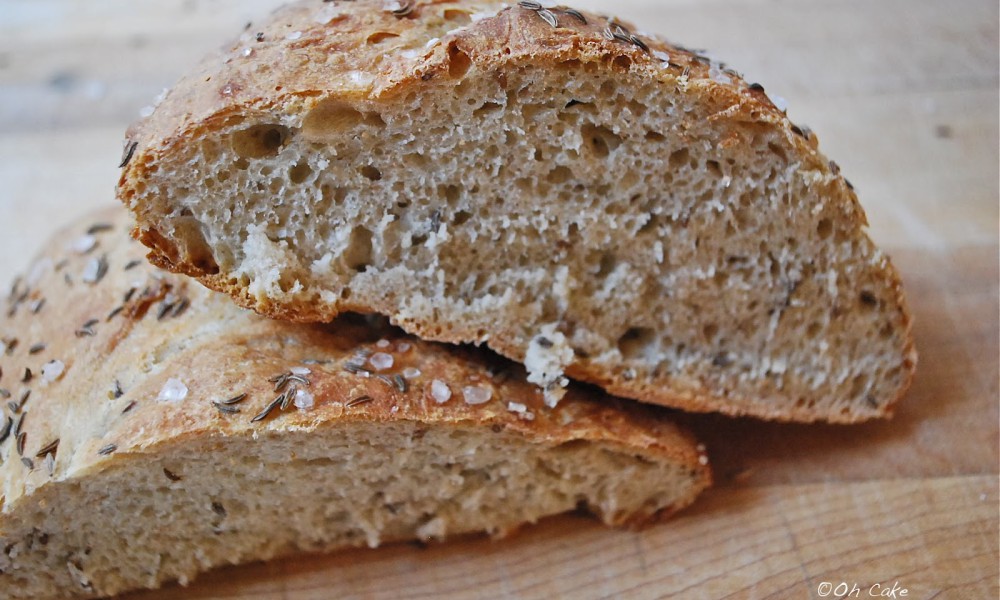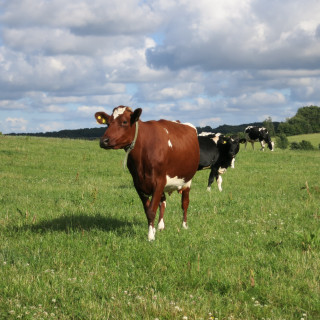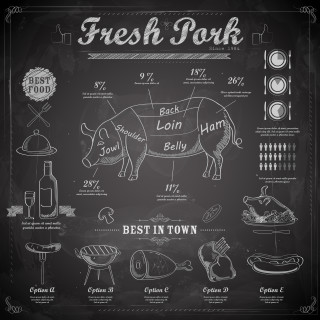Studies of bread’s internal processes could reduce waste
Swedish households throw large quantities of bread away and even more bread is returned by shops. We throw bread away because it is starting to become hard, dry or crumbly. In order to improve bread’s keeping qualities, researchers at Lund University are studying what happens inside freshly baked bread when it cools and when it is stored.
Every year, at least 1.2 million tons of food is thrown away in Sweden, according to the National Food Agency. Swedish households are the major source of this food waste – i.e. food that could have been eaten instead of being thrown away – unnecessarily disposing of an estimated 239 000 tons of food a year. Producing food that is then not eaten is a waste of resources and an unnecessary contribution to greenhouse gas emissions.
Bread represents a large proportion of household food waste; we throw away almost as much bread as fruit and vegetables. One way of reducing bread waste is to ensure that the bread stays soft for longer.
Role of starch
Reader Malin Sjöö from the Department of Food Technology at Lund University is one of the researchers who are trying to understand what happens inside bread when it goes stale.
“Staling has a lot to do with the composition and properties of the starch”, says Malin Sjöö.
Plants store their excess energy in the form of starch, which thus forms a large proportion of the flour we use in baking. Wheat flour, for example, comprises around 70 per cent starch. The origin of the starch has a major impact on the baking properties of the flour and the keeping qualities of the bread, partly because the molecular structure of the starch varies between plants.
“There are two basic starch molecules: amylose, which primarily determines the structure at the time of baking, and amylopectin, which primarily affects how the bread ages”, explains Malin Sjöö.
Amylose and amylopectin together form particles known as starch granules. Malin Sjöö and her colleagues study how the molecules in the starch granules affect each other and how they affect the staling process.
“When the freshly baked bread has cooled, and while it is stored, the amylopectin molecules can bind together and form larger structures – a crystalline network – and this leads to changes in the hardness of the bread”, says Malin Sjöö.
Mobility of water affects keeping qualities
In order to understand what happens, we have to start with the baking process. When the dough is heated up in the oven, ‘gelatinisation’ takes place, i.e. amylose leaks out of the granules and more water can enter. The starch granules swell, gelatinisation begins and crystalline structures are lost. Once the bread has cooled and when it is in storage, water moves in the starch gel and molecules are rearranged, leading to a more regular structure. The formation of this crystalline network is referred to as retrogradation.
“Every year, at least 1.2 million tons of food is thrown away in Sweden.”
Retrogradation is influenced by a number of factors: time, temperature and water content. Amylose ‘completes’ its structure within 48 hours, while amylopectin forms larger structures for up to two weeks. The process happens more quickly at relatively low temperatures, such as in the fridge as opposed to at room temperature.
“We are mainly working with water in combination with the properties of the starch and other ingredients. Both amylose and amylopectin affect the structure and the molecular environment of the bread. They influence what happens as the bread becomes stale, how water can be distributed within the bread and how mobile the water is between different phases”, explains Malin Sjöö.
There is an optimal water content for starch, when most hard structures are formed. Today, the industry is experimenting with enzymes and emulsifiers to influence the structure of the starch and the mobility of the water and thereby improve the keeping qualities of the bread.
“If we can raise or lower the water content slightly or bind the water to other components, we can influence the staling process at micro-level and obtain bread that keeps better”, says Malin Sjöö.
Starch fanatic
Studying how adding or removing different components affects the staling process is important not only to reduce bread waste but also to develop good-quality high-fibre, sourdough or gluten-free bread. In order to understand what happens, the researchers want to find out more about how structures and networks are formed when more components are present. What form and size do they have and how is water distributed in the components?
“It is first when we understand all the mechanisms that we will be able to say exactly what we’re going to do”, says Malin Sjöö. “In the industry, attempts are experimental based on the knowledge we have today. I would like to connect the basic research and the pure product development so that we can tackle the problem from two angles.”
Malin Sjöö would primarily like to look into the tiny details and compare how starch from different crops (with different amylose/amylopectin content, or with differences in their molecular structure) affects how bread goes stale.
“I’m basically a starch fanatic”, concludes Malin Sjöö with a laugh.
Text: Pia Romare
Published: 2014
Facts
-
About staling
-
Staling encompasses all changes that take place in bread while it is being stored (apart from the microbiological changes, i.e. the formation of mould). The process of bread going stale is also affected by how it is baked – industrial or small-scale, and on a tray or in a tin.
-
About starch
-
- Starch, (C6H10O5)n, is the second most common carbohydrate in nature after cellulose.
- Starch is made up of glucose.
- Starch contains very large molecules.
- Amylose and amylopectin
- Together, the molecules build starch granules.
- The properties and composition of starch are largely determined by its botanical origin.
- Wheat starch is 75 per cent amylopectin and 25 per cent amylose.
- Starch has a range of functional properties that depend on how it is processed (for example how bread is baked); time, temperature, addition of fats and water content





